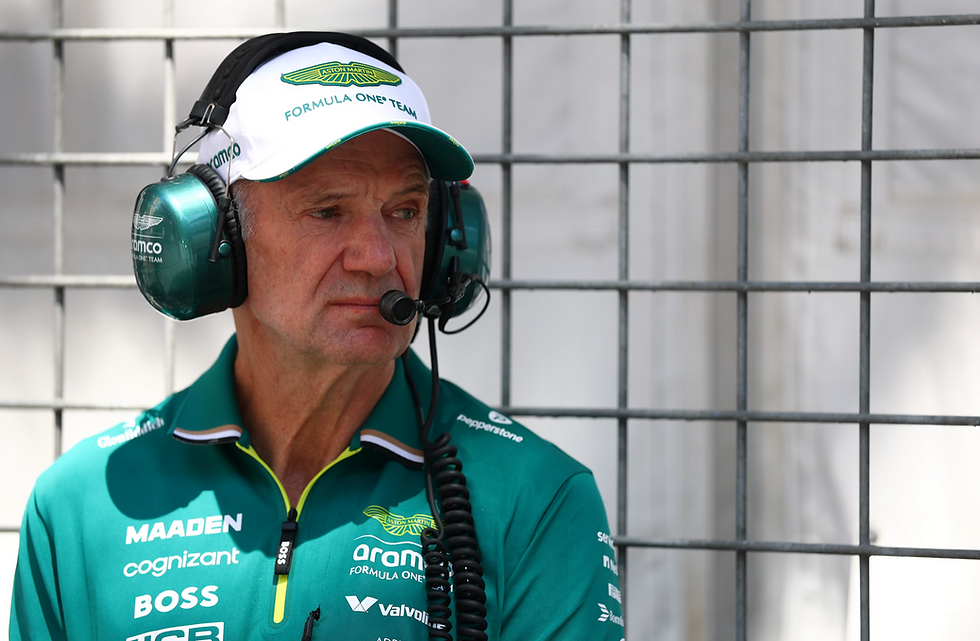How Ferrari returned to the front of the grid and what they have to do to stay there
- Justin Tan
- Mar 24, 2022
- 4 min read
Updated: Jan 3
Written by Justin Tan, Edited by Harshi Vashee
The sense of ecstasy almost matched the flood of emotion as the opening bars of the Italian national anthem rang out over the Bahrain International Circuit on a joyous Sunday night. After 46 races without a single victory, stretching back to Sebastian Vettel’s calculated triumph under the floodlit Singapore summer in 2019, Ferrari finally reclaimed the top two steps of Formula One’s podium and with it, re-established itself as a championship contender for the first time in over three years.
With all due respect, anything short of fighting for podiums and championships on the dawn of F1’s new technologically advanced era would have been considered a failure for F1’s most successful team. Ferrari’s dormant and frankly neglected period had only been tolerated because of the promise of a return to the top under F1’s new car regulations implemented this season. For the past year, positive chatter had leaked out of Maranello about the potential of its new car and its “aero busting” power unit. The first pre-season test in Barcelona appeared to validate such optimism from its loyal Tifosi, but those within the team were still keen to mellow the hype. Ferrari had shown promise in testing before, only to disappoint at the opening hurdle.
“I think the expectations are there, we create them, but that’s Ferrari,” Team Principal and divisive figure Mattia Binotto said after the race. “I think everybody was waiting for us and after some difficult seasons, I think we pushed a lot and we worked very hard back at the factory. The team is great and it's good to see that at least today we are performing OK. Tomorrow will be another day, I know that pretty well -- I know that tomorrow can be even tougher because the race is long.” Binotto’s modesty had been understandable given the pressure he has faced at the tiller of the Ferrari powerhouse in recent years, but there was no questioning the car’s incredible step up in performance around the Bahrain International Circuit. The margin over Red Bull may have been minimal - just 0.1s in qualifying and even less over some stages in the race - but at the crucial tipping point, Charles Leclerc held the edge over the increasingly agitated Max Verstappen. He had the race under control long before Red Bull’s double retirement, notwithstanding the late-race safety car that beckoned to promote a tense end to the race.

One reason why Ferrari has started the 2022 season so well is precisely because it spent the past two years in the midfield. (No I am not joking)
For starters, with no championships to play for and the pressures that follow, the team switched its full forces to 2022 earlier than rivals Red Bull and Mercedes, who were locking horns in a fierce constructors and drivers championship, one that went down to the last lap; giving it more money under F1’s budget cap to splash at this year’s car. Added to that, Formula One brought in new rules at the start of 2021 to assist struggling teams move back up the grid, including a principle that allowed teams that finished lower down the order more aerodynamic testing capability - applied to both in the wind tunnel and with Computational Fluid Dynamics (CFD).
Henceforth, when Ferrari reached its lowest point in 40 years by finishing sixth in the championship in 2020, it had the silver lining of inadvertently giving the team more development potential for this year’s car. That extra time in the wind tunnel and CFD capabilities was clearly well spent, with not just Ferrari, but also many of the perennial backmarkers - Haas, Williams, and Alfa Romeo - with Ferrari’s engineers dreaming up a unique take on the 2022 rule with the most extreme design concepts on this year’s grid. The most eye-popping being the humorously “bathtub” dubbed sidepods.
Adding on, unlike rivals Red Bull and Mercedes, who brought major updates to their second Barcelona testing session, Ferrari only made minor tweaks to details on its car following the data collected from the first test in Barcelona. This provided the team with a more stable platform to build on and a more comprehensive understanding of its car ahead of the season.
However, I would be inclined to agree with many engineers around the paddock in warning against reading too much into relative performances of the cars in Bahrain. The track’s bumpier surface, lap time emphasis on low-speed corners, and its long straits meant that it was not wholly representative of a lot of the circuits on the F1 calendar, and seems to oddly suit all of the design perks of the Ferrari SF-75; supporting its strong engine package and low-speed supremacy. In 2019, the Ferrari also looked like the class of the field in Bahrain, but over the course of the season it was slowly worn down by Mercedes and then the FIA, by its own fuel flow accountability.
To quote Binotto, “Jeddah in a week’s time could be a completely different picture and I think we need to wait, as I always said, four or five races before we can assess in full. To answer your question, I would wait for four or five races [to know whether Ferrari can fight for the title].” Having witnessed the dramatic title collapse over the turbo-hybrid era, I would have to agree with Binotto, and treading carefully seems to be on the menu for the Maranello outfit, who will be looking for a sweet Prosecco Spumante to go with its 17th World Constructors Championship.
Follow DIVEBOMB on all our socials:










Comments